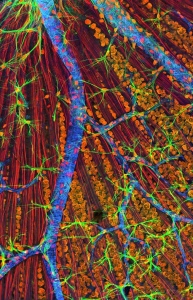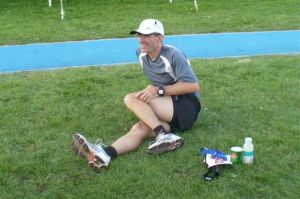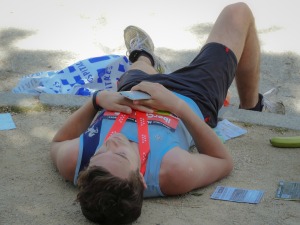Discipline Practice 4 is the simplest of them all, but perhaps the most difficult to do.
Imagine a simple analogy:
You are planning a road trip to go see New York city. Three days before the date you had set, you decide not to wait, and leave immediately. You pack the car in a hurry, and forget to bring the camping gear you were hoping to use to save on motel rooms. Half-way to New York, you see a signpost for Philadelphia, and figure you have enough time, so you’ll go there as well. You spend a large amount of money on a hotel room you find very late at night because you’ve driven too far and are by then exhausted and can’t drive any farther.
The next morning you drive around Philly a bit and finally head towards New York. You get there to realize the main thing you wanted to see, the Metropolitan Museum of Art, is closed, opening again only two days later (which would have been fine had you gotten to New York on the expected date). Having few other options, and to make yourself feel a bit better, you once again splurge on an expensive hotel, and the next morning drive back home, where you end up disappointed about your trip because you did not see what you really wanted to see, and spent way too much money…
I can’t put it any plainer than this:
Stick to the plan.
Yes, this one is really called “stick to the plan.”
This holds as much for training as for racing, though it is perhaps more noticeable in the latter case.
Whether you are training with the help of a coach or by yourself, you must have a plan for reaching better fitness. It can be a simple plan, like what No-brainer Fitness is recommending (moving more, on a daily basis), or it can be a detailed training regimen to reach some particular goal (like participating in an Ironman triathlon). No matter. A plan is a plan. Everybody makes them.
You don’t need to be a project manager to understand the proper way to plan for something.
- Step 1: First, you figure what your objectives are, and where you currently are with respect to those objectives. This allows you to figure-out what is missing, and thus what needs to be done.
- Step 2: Then you make a detailed, phased approach, a Plan, for bridging the gap.
- Step 3: Next, you execute the Plan. You do what was planned, step by step, day by day.
- Step 4: Finally, after the conclusion of the Plan (your fitness event, race, or simply the end of the season of activities), you review the results, and assess whether anything needs to be done better next time.
Because there is always a next time: another season, another event, another goal.
The same holds true for a race plan, but in much more condensed form. You have a goal, there is a starting line; you race, following an established plan, and then you cross the finish line. Whether you cross it after the expected amount of time depends in large part on your training, but also on how well you followed the plan for the race itself.
But here’s what almost invariably happens: at some point, perhaps on many occasions during the execution of the plan, you diverge from what the plan said.
This could be during a training session in which you decide to do something different (typically, more, or simply completely different training), or during a preparatory event, when you decide you feel really good and will go full out instead of keeping the planned pace. Or during the race, where you go too fast, too soon, because you are really excited and think you can do better than planned.
You’ve gone through Step 1 and Step 2, but then you don’t follow Step 3 properly, often leading to a lesser result than hoped for. And when you get to Step 4, lots of reasons can be found to explain what happened (a.k.a. excuses), but seldom do you recall that Step 3 was not followed properly. And you may even blame the Plan itself, or the coach, when in fact it was your Step 3 that was the problem.
Don’t get me wrong, I’m all for having some flexibility with respect to following plans. In particular when listening to your body clamoring for rest, or having to deal with unexpected conditions like the weather or unforeseen family obligations.
And perhaps the Plan was not a good one, or not good enough.
But here’s the thing: If you don’t follow the Plan as closely as possible, you cannot claim that it is not a Good Plan. And you don’t really know how to make it any better.
In training and exercising just like in life in general, we’re supposed to keep learning. Or at least avoid making the same mistakes more than twice (see how much leeway I give us?). The planning process is there to facilitate that learning.
But the only way it works is if you have the discipline to stick to the plan.
Picture from Pixabay.









